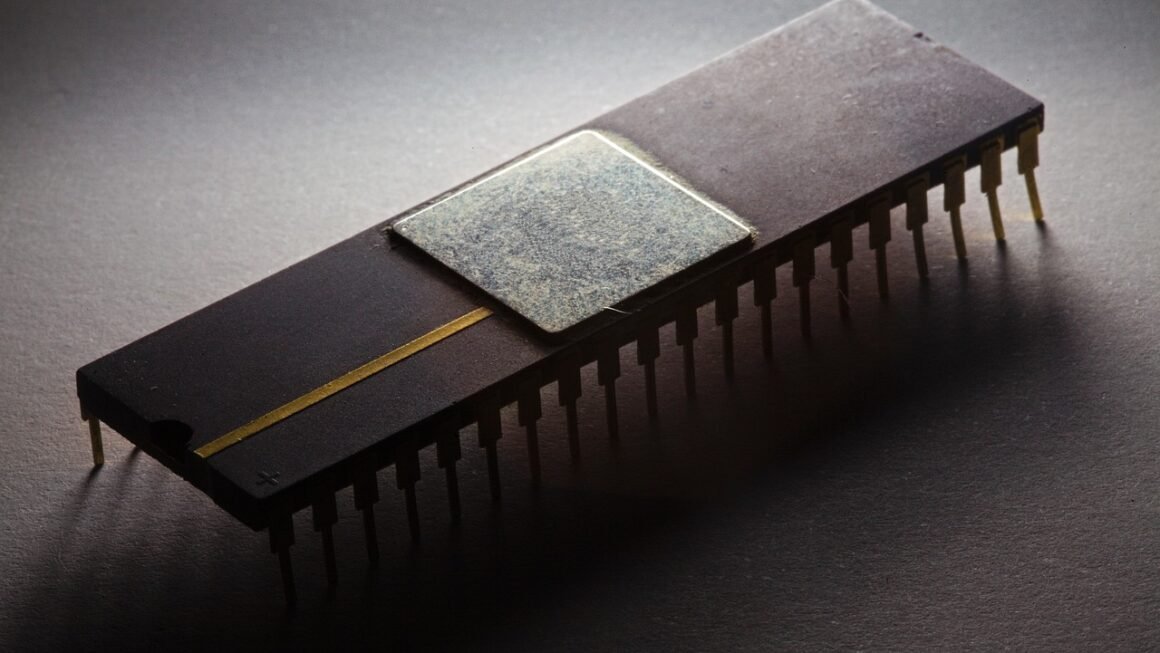Wearable technology has moved beyond simple fitness trackers and is now seamlessly integrating into various aspects of our lives. From smartwatches that manage our schedules and health to augmented reality glasses enhancing our work and leisure, wearable tech is transforming how we interact with the world. This blog post explores the exciting world of wearable technology, delving into its applications, benefits, and future trends.
Understanding Wearable Technology
What is Wearable Tech?
Wearable technology refers to electronic devices that can be worn on the body, either as accessories or embedded in clothing. These devices are designed to collect, analyze, and transmit data, offering users a range of functionalities, including:
- Tracking fitness metrics (steps, heart rate, sleep patterns)
- Providing notifications and alerts from smartphones
- Enabling contactless payments
- Offering navigation assistance
- Monitoring health conditions
Key Components of Wearable Devices
Most wearable devices share common components that enable their functionality:
- Sensors: These components gather data about the user’s body or environment. Examples include accelerometers, gyroscopes, heart rate sensors, GPS modules, and temperature sensors.
- Processors: These are the brains of the device, responsible for processing the data collected by the sensors and executing applications.
- Connectivity: Wearable devices typically use Bluetooth or Wi-Fi to connect to smartphones, tablets, or other networks, allowing data transfer and synchronization.
- Power Source: Batteries are essential for powering wearable devices. Battery life is a crucial factor for users.
- Display: Many wearables feature displays to show information, notifications, and interactive interfaces. These can range from simple LED indicators to high-resolution color screens.
Benefits of Using Wearable Tech
- Improved Health and Fitness: Wearables encourage a healthier lifestyle by tracking activity levels, providing personalized insights, and motivating users to achieve their fitness goals.
- Increased Productivity: Smartwatches and other wearables can streamline daily tasks by providing quick access to notifications, calendars, and communication tools.
- Enhanced Convenience: Contactless payments, hands-free navigation, and remote control of smart home devices are just a few examples of how wearables can simplify everyday life.
- Real-time Data Monitoring: Wearable sensors can continuously monitor vital signs, providing valuable data for managing chronic conditions and detecting potential health issues early on.
- Enhanced Safety: Some wearables offer safety features such as fall detection, emergency SOS alerts, and location tracking, providing peace of mind for users and their families.
Popular Types of Wearable Devices
Smartwatches
Smartwatches are arguably the most popular type of wearable tech, offering a wide range of functionalities beyond telling time.
- Features:
Fitness tracking (steps, heart rate, sleep)
Smartphone notifications
App support
Contactless payments
GPS navigation
Voice assistants (e.g., Siri, Google Assistant, Alexa)
- Examples: Apple Watch, Samsung Galaxy Watch, Fitbit Versa
Fitness Trackers
Fitness trackers focus primarily on monitoring physical activity and health metrics.
- Features:
Step counting
Heart rate monitoring
Sleep tracking
Calorie tracking
Activity recognition (e.g., running, swimming, cycling)
- Examples: Fitbit Inspire, Garmin Vivosmart, Xiaomi Mi Band
Smart Glasses
Smart glasses overlay digital information onto the user’s field of view, creating augmented reality (AR) experiences.
- Features:
Hands-free information display
Real-time data overlays
Voice control
Image and video capture
- Examples: Google Glass Enterprise Edition, Microsoft HoloLens (although more a headset), Vuzix Blade
Hearables
Hearables are wireless earbuds that offer advanced features beyond audio playback.
- Features:
Noise cancellation
Real-time language translation
Fitness tracking
Voice assistant integration
- Examples: Apple AirPods Pro, Bose QuietComfort Earbuds, Jabra Elite Active
Smart Clothing
Smart clothing integrates sensors and electronics directly into fabrics, enabling continuous monitoring of physiological data.
- Features:
Heart rate monitoring
Muscle activity tracking
Body temperature sensing
Posture correction
- Examples: Athos (muscle activity tracking), Hexoskin (physiological monitoring)
Applications Across Industries
Healthcare
Wearable tech is revolutionizing healthcare by enabling remote patient monitoring, personalized treatment plans, and early disease detection.
- Examples:
Continuous glucose monitoring (CGM) for diabetes management
Wearable ECG monitors for detecting heart arrhythmias
Fall detection devices for elderly care
Remote patient monitoring platforms for chronic conditions
Sports and Fitness
Athletes and fitness enthusiasts use wearable devices to track performance, optimize training, and prevent injuries.
- Examples:
GPS-enabled running watches for tracking distance, pace, and elevation
Heart rate monitors for measuring exertion levels
Motion sensors for analyzing athletic technique
Smart clothing for monitoring muscle activity
Enterprise
Wearable devices are improving efficiency, safety, and productivity in various industries.
- Examples:
Smart glasses for providing hands-free instructions to field technicians
Wearable scanners for warehouse inventory management
Safety vests with sensors for monitoring worker location and vital signs
Smartwatches for improving communication and coordination among team members
Entertainment and Gaming
Wearable tech is enhancing entertainment experiences by providing immersive augmented reality and virtual reality (VR) interactions.
- Examples:
VR headsets for gaming and virtual simulations
AR glasses for overlaying digital content onto the real world
Motion-tracking controllers for interactive gaming experiences
The Future of Wearable Technology
Advancements in Sensor Technology
Future wearables will likely incorporate more advanced sensors capable of measuring a wider range of physiological parameters, such as:
- Blood pressure monitoring
- Hydration levels
- Stress biomarkers
- Sweat analysis
Integration with AI and Machine Learning
Artificial intelligence (AI) and machine learning (ML) will play a crucial role in analyzing wearable data and providing personalized insights and recommendations.
- Predictive health analytics
- Adaptive training programs
- Personalized coaching
Enhanced Connectivity and 5G
The rollout of 5G networks will enable faster data transfer and more reliable connectivity for wearable devices, facilitating real-time data streaming and remote control.
Miniaturization and Enhanced Design
Future wearables will be smaller, more comfortable, and more aesthetically pleasing. The trend towards seamless integration into clothing and accessories will continue.
Ethical Considerations
As wearable technology becomes more pervasive, ethical considerations regarding data privacy, security, and bias will become increasingly important. It’s important to understand:
- Data Privacy: Ensuring user data is protected and used responsibly.
- Data Security: Implementing robust security measures to prevent data breaches.
- Algorithmic Bias: Avoiding bias in AI algorithms to ensure fair and equitable outcomes.
Conclusion
Wearable technology is rapidly evolving, offering a wide range of applications across various industries. From improving health and fitness to enhancing productivity and entertainment, wearable devices are transforming how we interact with the world. As sensor technology advances, AI integration deepens, and connectivity improves, the future of wearable tech promises even more exciting possibilities. By understanding the benefits, applications, and ethical considerations of wearable technology, users and businesses can harness its power to improve their lives and operations. Embracing this technology while remaining mindful of data privacy and security is key to unlocking its full potential.



